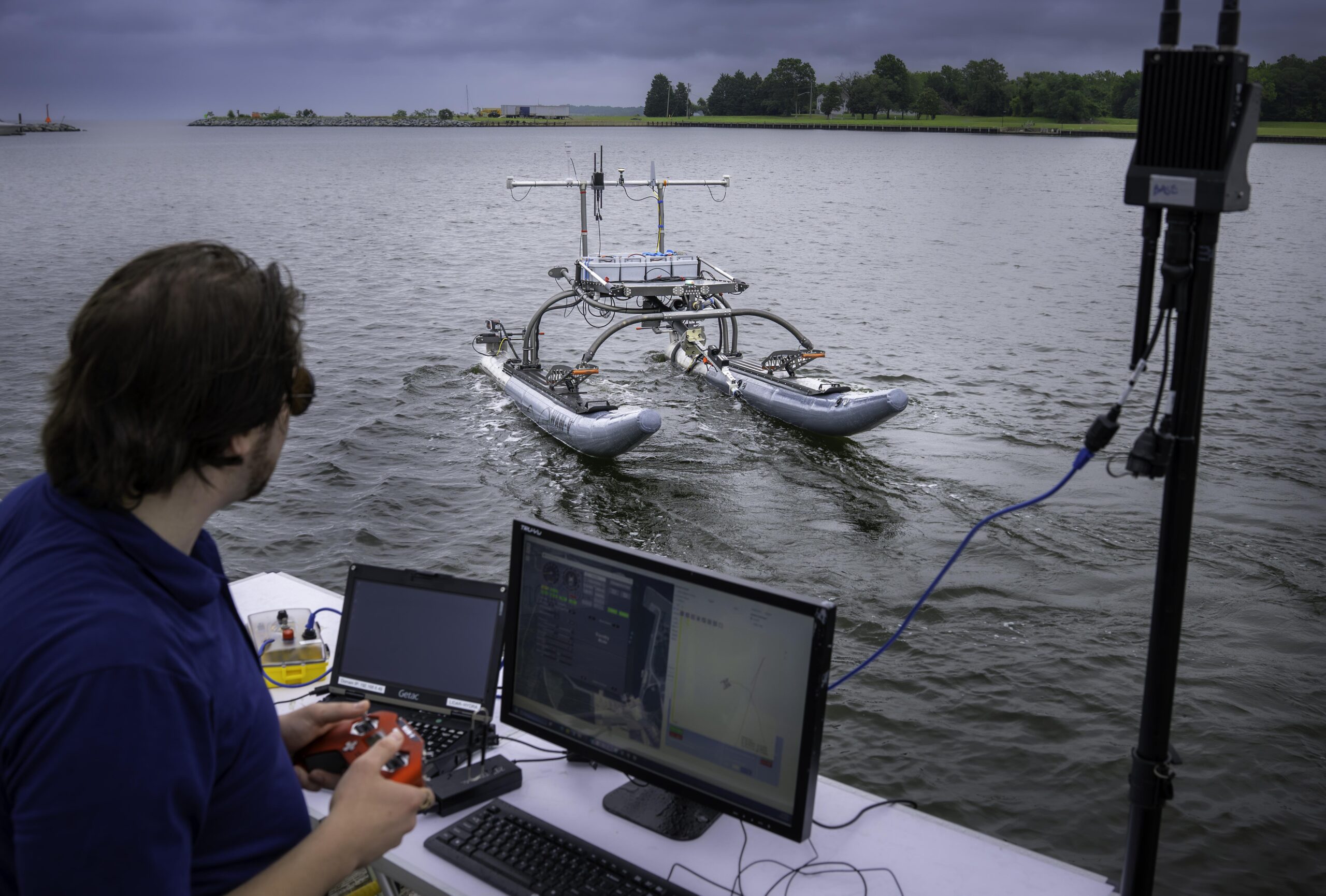The US Navy is stepping into a new era of mission planning with the help of artificial intelligence, as demonstrated by the Naval Air Warfare Center Aircraft Division (NAWCAD) at its headquarters in Patuxent River, Maryland.
This advancement comes in the form of a groundbreaking software program called Optimized Cross Domain Swarm Sensing (OCDSS), designed to orchestrate missions involving groups of unmanned systems—drones that operate in the air, on the surface, and underwater. By tapping into the power of computer simulations, this technology is poised to transform how the Navy and Marine Corps deploy their growing fleet of unmanned vehicles, making operations faster, smarter, and more cost-effective.
At its core, OCDSS is about finding the best way to use drones for specific tasks at sea. The software runs thousands of virtual scenarios to figure out which combination of unmanned systems, sensors, and arrangements will deliver the desired results. Whether it’s scouting an area, keeping watch over a port, or carrying out a coordinated action, OCDSS takes the guesswork out of planning by testing countless possibilities in a fraction of the time it would take to do so in the real world.
This ability to predict how different drones might work together gives planners a clear picture of what’s needed for each mission, ensuring the right tools are chosen for the job. Rear Adm. Todd Evans, who commands NAWCAD, sees this technology as a game-changer for naval operations. “Autonomy is the decisive edge for maritime dominance,” he said. “This technology is critical to enhancing operations across domains and represents a big step forward for manned-unmanned teaming.”
His comment points to a broader vision where human operators and autonomous systems work hand in hand, combining the strengths of both to tackle challenges in the air, on the water, and beneath the surface. It’s a shift that could redefine how the Navy maintains its presence and power at sea. The brains behind OCDSS is Raymond Koehler, a mechanical engineer at NAWCAD and the lead software developer for the project. He describes the software as a tool that “quickly runs thousands of simulations to predict how different unmanned systems might perform together.”
For Koehler, the real value lies in what this means for those on the front lines: “This software gives warfighters faster and more effective decision-making—that’s competitive advantage.” By crunching the numbers and testing options virtually, OCDSS allows the Navy to make informed choices without the delays and uncertainties of traditional methods. One of the standout benefits of OCDSS is how it cuts down on the time and expense of real-world testing.
In the past, figuring out the best way to use unmanned systems might have meant sending drones into the field, running drills, and analyzing the outcomes—a process that could take weeks or months and come with a hefty price tag. Now, with OCDSS, much of that work happens on a computer, mirroring how industries outside the military rely on simulations for up to 90% of their development efforts. This approach not only saves money but also lets planners experiment with ideas that might be too risky or impractical to try out live, opening the door to new strategies and tactics.
The software got a real-world workout in August 2024 at ANTX Coastal Trident, an event centered on port security. There, OCDSS showed what it could do by simulating how unmanned systems could protect a harbor, offering up data that will guide its next stages of growth. Koehler is optimistic about what’s ahead, saying, “OCDSS levels up how unmanned systems are used in a wide range of missions, and we’re ready to scale this autonomy to operational teams or test programs across the Navy and Marine Corps.”
His confidence suggests that this isn’t just a prototype—it’s a tool that’s ready to make a difference now, with the flexibility to adapt to all kinds of assignments. Koehler’s work hasn’t gone unnoticed. For his efforts in advancing swarm autonomy, he received the Assistant Secretary of the Navy’s 2025 Dr. Delores M. Etter Top Scientists and Engineers of the Year Award as an Emergent Engineer, a recognition of his role in pushing this technology forward. The team he works with also earned a NAWCAD award for their partnership with the Naval Surface Warfare Center Carderock Division, a collaboration that brought together different expertise to make OCDSS a reality.
These accolades reflect the Navy’s commitment to fostering talent and teamwork in pursuit of cutting-edge solutions. NAWCAD itself is a hub of innovation, with a mission to support the Navy and Marine Corps through every phase of aviation technology—from research and development to testing and upkeep. Based in Patuxent River, Maryland, the center also operates major sites in St. Inigoes, Maryland; Lakehurst, New Jersey; and Orlando, Florida. Its staff, a mix of military, civilian, and contract workers, run test ranges, laboratories, and aircraft to keep naval aviation at the forefront.
The successful demonstration of OCDSS is just one piece of that larger effort, showing how NAWCAD is helping the Navy stay ahead in a world where technology is changing fast. As the Navy looks to the future, tools like OCDSS are paving the way for a more autonomous and adaptable force. By using AI to plan drone swarm missions, the Navy isn’t just keeping up—it’s setting the pace, ensuring that its unmanned systems are ready to meet whatever challenges come next. With the groundwork laid at NAWCAD, this technology promises to bring a new level of precision and power to operations at sea, proving that the future of naval warfare is already taking shape.

